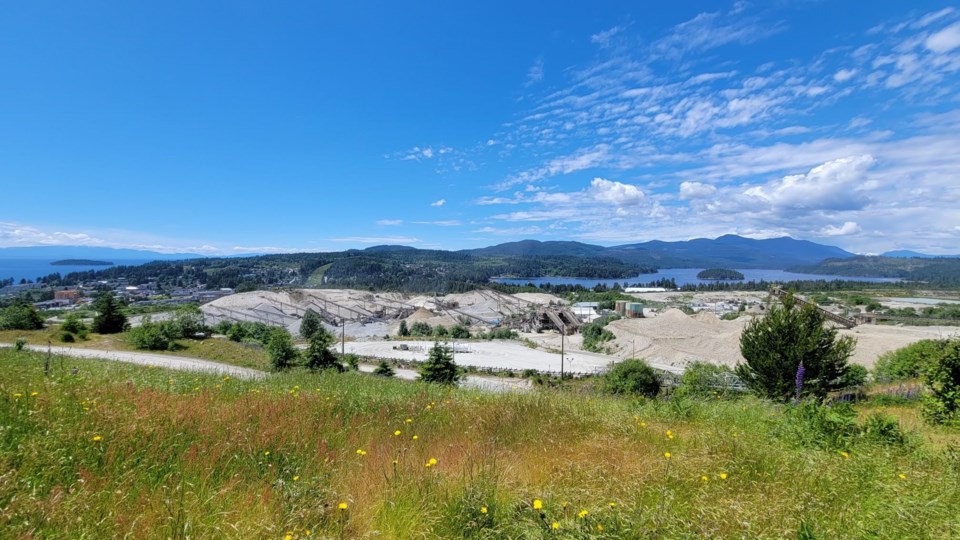The Sunshine Coast Regional District board endorsed a letter of support for the shíshálh Nation’s application for provincial funding of its Lower Crown raw water reservoir at its Oct. 12 meeting. That proceeded without a cost attached, but staff advised them to brace for major financial, staff and existing initiative impacts should that application be successful.
If approved, the Nation’s ask for B.C. Community Emergency Preparedness Fund Disaster Risk Reduction-Climate Adaptation funding could provide about $5 million for the estimated $20 to 30 million project, SCRD chief administrative officer Dean McKinley explained. According to a staff report added as a late item to the meeting agenda, application success would be a step toward starting project construction before the end of 2023 and the shíshálh Nation's target of having the reservoir built by mid 2024.
Board decisions required
To be part of an SCRD water system, the project needs board approval. That, according to the report, requires directors to consider the costs and benefits of the reservoir and whether it should be prioritized over already planned water supply and conservation initiatives. Full project funding is being sought from the province by the Nation and via the joint Nation/SCRD application made to the federal government. Deciding to proceed before either is in place means the financial impacts for regional taxpayers would also have to be considered.
While the motion to indicate support for the project to be considered for provincial funding was unanimously endorsed, several directors stated there were multiple questions yet to be addressed. Sechelt Area director Alton Toth noted his concern for committing valuable staff time and potentially delaying other work in advance of having a decision to proceed or without full project funding in place. McKinley noted that given the timeframe of potentially proceeding with the project this year, staff “may have a very short time to respond with budget and work plan adjustments."
With the capacity of the proposed reservoir at 780,000 cubic metres, McKinley said the additional water storage would equate to “about one and a half” times the annual volume produced by the Church Road Well Field, which came in at about $9.5 million to build. Capital costs, even if fully grant funded, he noted are only one factor the board will need to consider. Paying for ongoing operations and supporting infrastructure, including pumping water from the location at the Heidelberg Materials mine site to Chapman Water Treatment Plant need to be included in the decision making.
More work to come
Any future call by the board to move the project forward would be the tip of current and 2024 SCRD budget and workload impacts according to the report. An amendment to the SCRD’s water licence would be required to fill any reservoir with flows from Chapman Creek. That would involve an application and associated engineering, geotechnical and environmental studies. Vancouver Coastal Health approval of any new storage structure used for regional drinking water would be required. There would also need to be multiple agreements between the Nation and SCRD on paying for, operating and linking the reservoir to existing infrastructure.
“While it has yet to be confirmed if it would actually be possible to complete all the above-listed tasks in time for the Lower Crown Reservoir to be commissioned by next summer, doing so would have a significant impact on the current workload and delay the completion of many other water supply expansion projects, replacement or upgrades to current water infrastructure,” the report stated.
The report was presented as a “high-level overview of some of the steps to be taken” and McKinley said the items identified were not an exhaustive list of what needs to be done. The document included an estimate that completing the listed requirements would eat up the equivalent of two full-time person years of staff time and could require spending in the range of $250,000 for external support services, neither of which are currently budgeted for.

